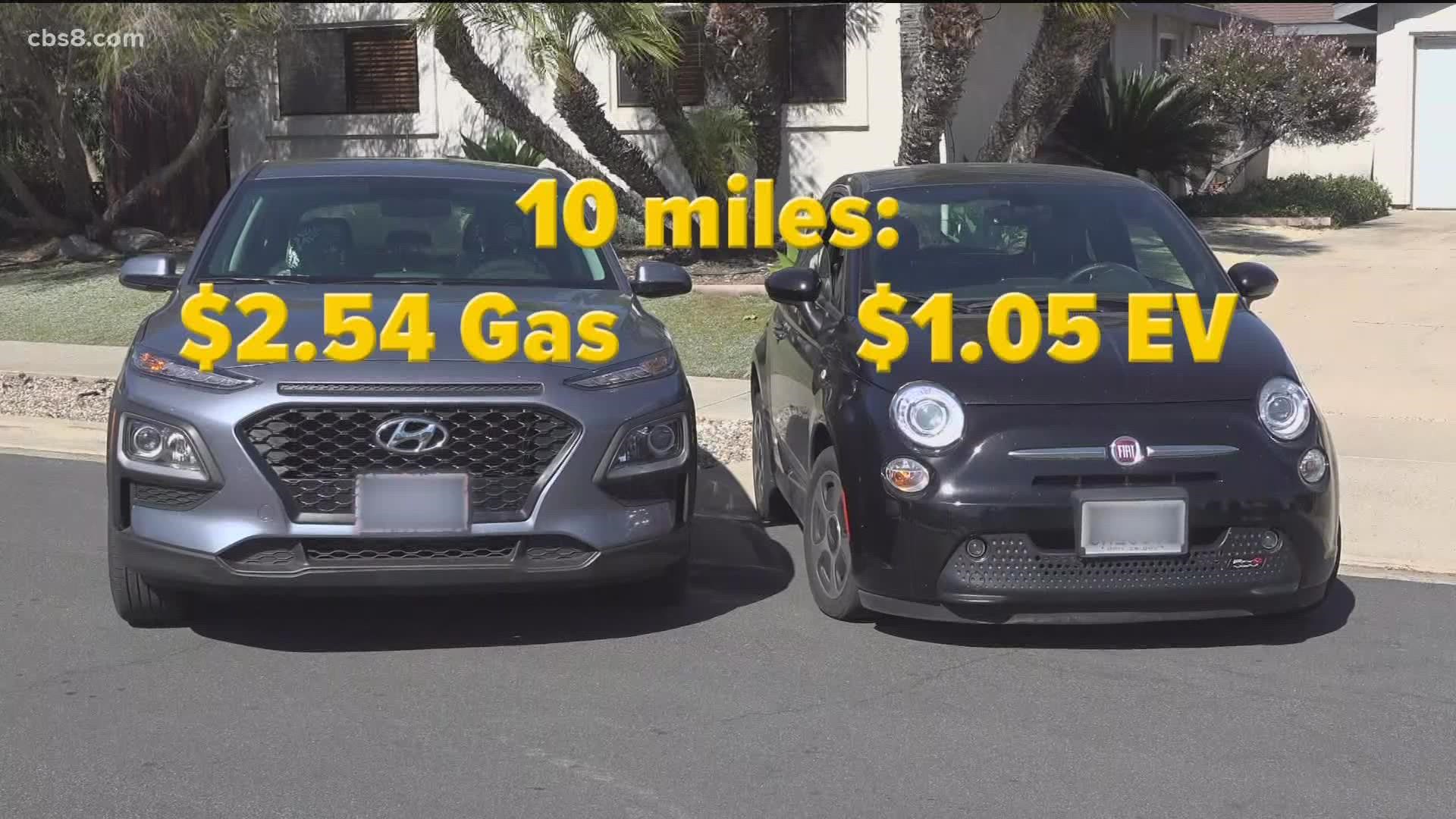SAN DIEGO — The State of California aims to have 8 million electric vehicles on the road by the year 2030. But is it really cheaper to drive an electric vehicle (EV) rather than a gasoline vehicle?
CBS 8 did a side-by-side comparison using current fuel prices in San Diego.
Brian Hall is the Art Director at CBS 8. He drives an all-electric Fiat and he does not have rooftop solar.
“It’s a 2019. It's the electric version of the Fiat 500. And, it's just a little car to scoot around town in,” said Hall. "If we had solar it would be almost free to drive.”
First, Hall charged up his EV to 100 percent. Then, he drove exactly 10 miles.
Because Hall owns an electric vehicle, SDG&E gives him a reduced rate for charging his vehicle after midnight.
“Because I charge at night after midnight, I get a special time-of-day rate which is under 20 cents per kilowatt hour,” said Hall.
But for this test, we are going to assume Hall does not charge after midnight and we'll use the average San Diego County electricity rate of 36.5 cents per kilowatt hour, as determined for December 2021 by the Bureau of Labor Statistics.
After driving 10 miles, Hall re-charged his car to 100%. It took 2.88 hours, and we multiplied that by the average rate of 36.5 cents per hour.
“Topping up my car after driving 10 miles cost $1.05,” said Hall.
So, again, a 10 mile drive in Hall's electric car cost him $1.05 to recharge.
Over the next eight years, San Diego County is going to need more than 100,000 additional electric vehicle charging stations at an estimated cost of more than $1 billion, according to the California Energy Commission and current cost estimates of EV charging station installations.
As a result, there is a debate over whether SDG&E ratepayers may have to foot the bill for some of those installations.
Will SDG&E install a portion of the charging stations and then apply for reimbursement of the capital costs, whereby the charges show up on ratepayer bills?
Or, will the State take bids from private companies, and fund incentives to the private sector to encourage ownership and maintenance of charging stations across San Diego?
One billion dollars is a lot of money, so you can see why there's a huge debate over whether ratepayers are going to have to foot the bill for some of those huge expenses.
For the second part of CBS 8's vehicle test, we used a 2018 Hyundai Kona, topping off the tank at a local gas station. Next, we hit the road for the 10-mile drive.
The price of gasoline at the Tierrasanta gas station was $4.39 per gallon. After 10 miles of driving, it took a little bit more than a half a gallon of gasoline to top off the tank, costing $2.54.
That's more than twice as much as Brian Hall paid to charge his EV after driving the same mileage which, again, was $1.05.
Our unscientific test showed that driving an electric car was cheaper than driving a gasoline-powered car, at least for the specific vehicles used in our example. A 10-mile drive may not be indicative of overall average costs.
And, of course, the electric vehicle produced zero emissions.
Watch: How household appliances are polluting air in California (Feb 14, 2022)

